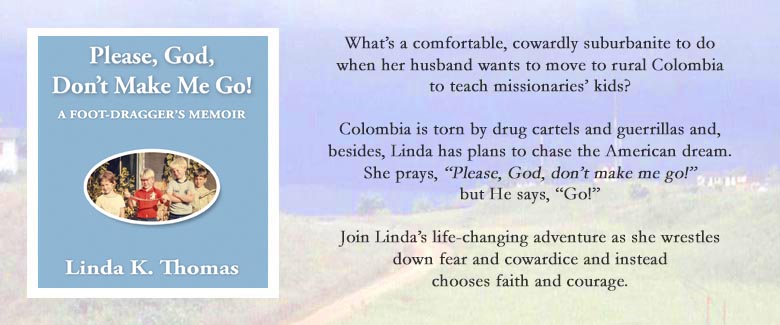Our new friend David Hockett told us, “Lunch is ready for you in the dining hall.
I’ll drive you up.”
He
loaded us into the Nissan and drove up and down and around the grassy hills of
Lomalinda. Loma means hill, and linda means pretty—“pretty hill” in Spanish.
For a reason only God knows, when He created the earth He raised up clusters of
rounded masses on that parcel of land surrounded by the llanos—open expanses of
steamy rolling grasslands, an infinite emerald green capped with an unbounded
royal blue sky.
Low
hollows between hills held swampy jungle—palms and other trees, and, in their
shadows, ferns, philodendrons, vines, shrubs, and grasses. Our new home sat
nestled in a blue and green world.
In
low gear, the Nissan strained up a long, winding, steep hill in the middle of
the mission center. Once on top, David pointed out the features of Loma One. “That’s
the Children’s Home, where Bible translators’ children live for a few weeks at
a time when their parents work in tribal locations.
“And
over there,” he pointed to a small blue building across from the Children’s
Home, “is the commissary, our store.”
David
turned toward a building beside the commissary. “Here’s the dining hall,” he
said, pulling to a stop in front of a low, white building with screened
windows.
 |
| The dining hall. Howie Bowman photo. |
He
led us inside, where people sat eating at long tables covered with white grease
cloth. The staff had expected us, thanks to someone’s foresight, so we found
places set for us. Lunch included spaghetti (we’d tasted better), fruit, plain
white bread with margarine, and a sugary drink. We were thankful for it—we were
hungry.
The best
part of that meal, the best part of the whole day, of the whole year, happened
when David Hockett introduced us to. . . .
But
wait! Before I can tell you the rest, I need to backtrack to the beginning of
this new phase in our lives and tell you how my heart broke into a million
pieces when Dave and I left Seattle with our kids, separating them from their grandparents
and aunts and uncles.
Let me
take you back to Chapter 1, and tell you how it all started:
My husband,
Dave, had burst through the front door of our Seattle-area home and, with a
boyish grin and outstretched arms, announced, “We’re moving to Lomalinda! I’m
going to teach there!”
A
few seconds passed before I could wheeze in enough air to speak. “Where is
Lomalinda?”
“Colombia,
South America!”
I
collapsed to the floor.
I’d
always expected we’d live a normal, predictable, all-American life but, without
warning, my husband declared he had other ideas.
As the youth director for our church, Dave had taken college
kids to a Wycliffe Bible Translators’ event hoping some would consider missions
work.
The
meeting failed to persuade any of his young people but, when Dave learned
Wycliffe needed teachers for their missionaries’ kids in Lomalinda, he was
hooked. He wanted to move the four of us, including our preschoolers, Matt and
Karen, to a dinky outpost in the middle of nowhere. (from Chapter 1, Please, God, Don’t Make Me Go: A Foot-Dragger’s Memoir)
C’mon back next week because I have so
much more to tell you.








